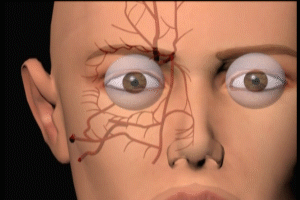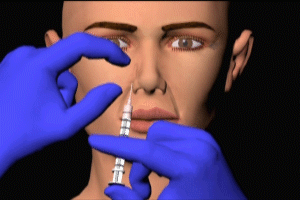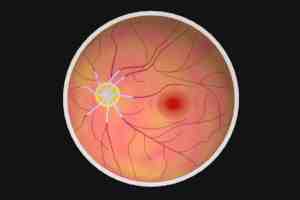Vascular Anatomy of the Eye and Facial Skin VAS301
Vascular Anatomy of the Eye and Facial Skin Transcript
Vascular Anatomy of the Eye and Facial Skin
This is Dr. Cal Shipley with a review of the vascular anatomy of the eye and the facial skin.
The eye lies within the protective bony orbit of the skull. The optic nerve exits the rear of the eye and carries electrochemical impulses, which are interpreted as visual images by the occipital lobes at the back of the brain.
Ophthalmic Artery
The ophthalmic artery is the primary source of blood flow to the eye. The central retinal artery branches off of the ophthalmic artery and enters the back of the eye. The CRA is the major source of blood flow to the retina. The retina consists of densely-packed nerve cells, which are light-sensitive, and is the basis of human sight.
The ophthalmic artery also gives rise to branches which contribute to the facial blood supply. These branches supply blood to the skin of the forehead,with secondary branches supplying the mid-face and nose.
Arteries from the lower face connect to the ophthalmic artery system, resulting in a dense web of interconnected blood vessels throughout the facial skin.
External Carotid Artery
The external carotid artery is a major source of connecting vessels in the mid and lower face. In addition, the facial arterial systems on the left and right side of the face also interconnect. As may be seen in my related video in this library on ophthalmic artery embolism, it is this extensive vascular interconnectedness of the facial arterial system which gives rise to the potential for ophthalmic artery embolism with dermal filler injection.
Skin Structure
Now, let’s do a brief review of the anatomy of the skin. Here is a cross-sectional view.
The skin structure is organized into a relatively thin layer of epidermis on top and a thicker layer of dermis beneath.
The dermis is further subdivided into a superficial and deep layer. The deep dermis is characteristically dense and tough. Small arteries known as arterioles supply blood to the dermis.
Beneath the dermis is the so-called subcutaneous layer, which consists mostly of fatty tissue.
Cal Shipley, M.D. copyright 2020



